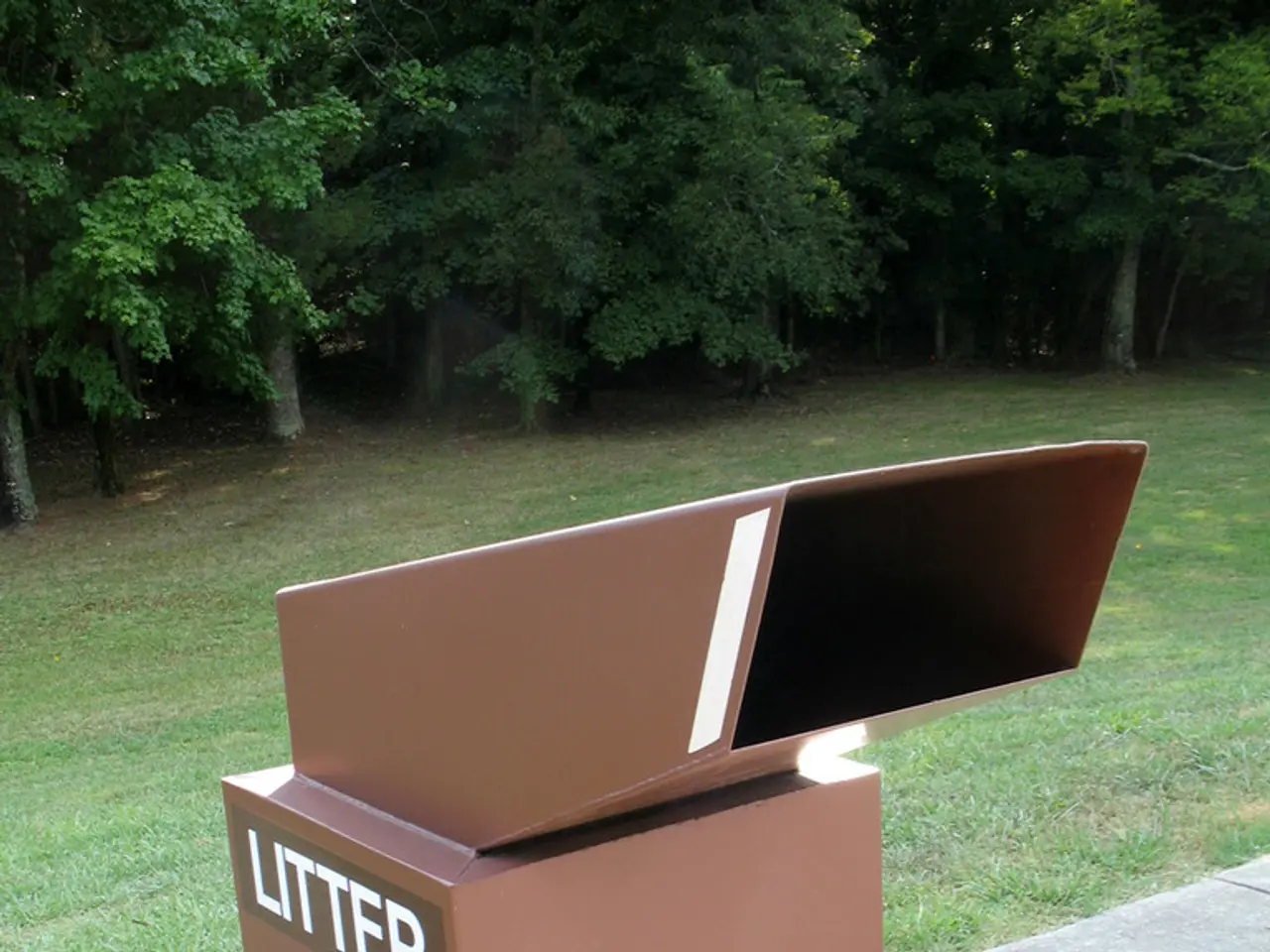Group of Waste Enthusiasts Gather, Promoting Cleanliness and Recycling
Combatting Litter Globally: The Litterati Project
Litter, particularly plastic waste, poses a significant threat to the environment and wildlife. It pollutes land, rivers, and oceans, threatens animal health, and disrupts natural habitats [2][3]. The Litterati project aims to address this issue by harnessing community engagement and technology to track, map, and reduce litter on a global scale.
Launched in 2020, Litterati opened up access to its Global Litter Database, which now contains over 6,000,000 pieces of litter that have been photographed, mapped, and labeled [1]. The project encourages individuals worldwide to participate by photographing litter in their local areas and uploading these images along with relevant tags.
By using geotags and keywords, Litterati identifies problem areas and the most commonly found products and brands [1]. This data empowers communities, governments, and organizations to target cleanup efforts effectively or implement prevention strategies where needed.
The Litterati project is positioned within the 'Investigating in science' and 'Participating and contributing' substrands of the Nature of science [1]. It is part of Victoria University of Wellington's "Citizen Scientists in the Classroom" project, funded by the Ministry of Education's Teaching & Learning Research Initiative [1].
In addition to Litterati, other citizen science projects tackle the issue of litter. Sustainable Coastlines runs a long-term beach litter project called Litter Intelligence, while Keep New Zealand Beautiful manages Backyard Battle and Mizuiku Upstream Battle [1]. Global Earth Challenge also has a section on plastic pollution.
Moreover, resources like the article "Material World - Recycling and biodegradability" curate information on topics such as waste, modern landfill systems, biodegradability, recycling, reuse, and plastic recycling [1]. The Building Science Concepts Book 61: "Recycling: New Uses for Rubbish" supports the understanding that materials can be classified by their properties [1].
The Litterati app allows users to tag litter using the COMB acronym (Category, Object, Material, Brand) [1]. Teachers can set up clubs for their students to join, and the app adds a geotag to each photo, enabling the download of club datasets for analysis [1]. Analyzing this data supports the 'engage with science' capability as students can use their data to address particular problem types of litter in their own area [1].
The project has a worldwide reach and offers pedagogical support for educators contributing to an online citizen science project [1]. Lesson plans, interactive worksheets, and other resources in the Keep New Zealand Beautiful (KNZB) "Kiki Kiwi & Friends 'Litter Less'" programme are available for 5-11-year-olds [1].
The Litterati project demonstrates a powerful combination of community engagement and technology, enabling more effective litter prevention and cleanup efforts. By increasing awareness and providing actionable data, Litterati helps bridge the gap between people’s littering behavior and its broader environmental impact.
References:
[1] Litterati. (n.d.). Retrieved from https://www.litterati.org/
[2] World Wildlife Fund. (2020). Marine plastic pollution. Retrieved from https://www.worldwildlife.org/issues/marine-plastic-pollution
[3] United Nations Environment Programme. (2014). Marine litter: A global challenge requiring coordinated actions. Retrieved from https://wedocs.unep.org/bitstream/handle/20.500.11822/79867/Marine-Litter-Report-2014.pdf
[4] Radio New Zealand. (2020, November 26). Citizen scientists help clean up Hutt Valley litter. Retrieved from https://www.rnz.co.nz/news/national/442839/citizen-scientists-help-clean-up-hutt-valley-litter
[5] National Geographic Society. (2020). Plastic pollution. Retrieved from https://www.nationalgeographic.org/encyclopedia/plastic-pollution/
[6] Sustainable Coastlines. (n.d.). Litter Intelligence. Retrieved from https://sustainablecoastlines.org/programmes/litter-intelligence/
[7] Keep New Zealand Beautiful. (n.d.). Backyard Battle. Retrieved from https://www.keepnzbeautiful.org.nz/programmes/backyard-battle/
[8] Keep New Zealand Beautiful. (n.d.). Mizuiku Upstream Battle. Retrieved from https://www.keepnzbeautiful.org.nz/programmes/mizuiku-upstream-battle/
[9] Hub Education. (n.d.). Material World - Recycling and biodegradability. Retrieved from https://www.ed.govt.nz/learning/resources/series/9588
[10] Ministry of Education. (n.d.). Building Science Concepts Book 60: Rubbish: How Do We Deal with It? Retrieved from https://www.education.govt.nz/resources/building-science-concepts/building-science-concepts-book-60-rubbish-how-do-we-deal-with-it/
[11] Global Earth Challenge. (n.d.). Plastic pollution. Retrieved from https://globalearthchallenge.org/plastic-pollution/
Science plays a crucial role in understanding the environmental consequences of litter and plastic waste, thereby promoting the importance of education and self-development in addressing this global issue. The Litterati project, for example, utilizes citizen science to engage students and communities in tracking, mapping, and reducing litter, providing data for effective cleanup efforts and prevention strategies.




